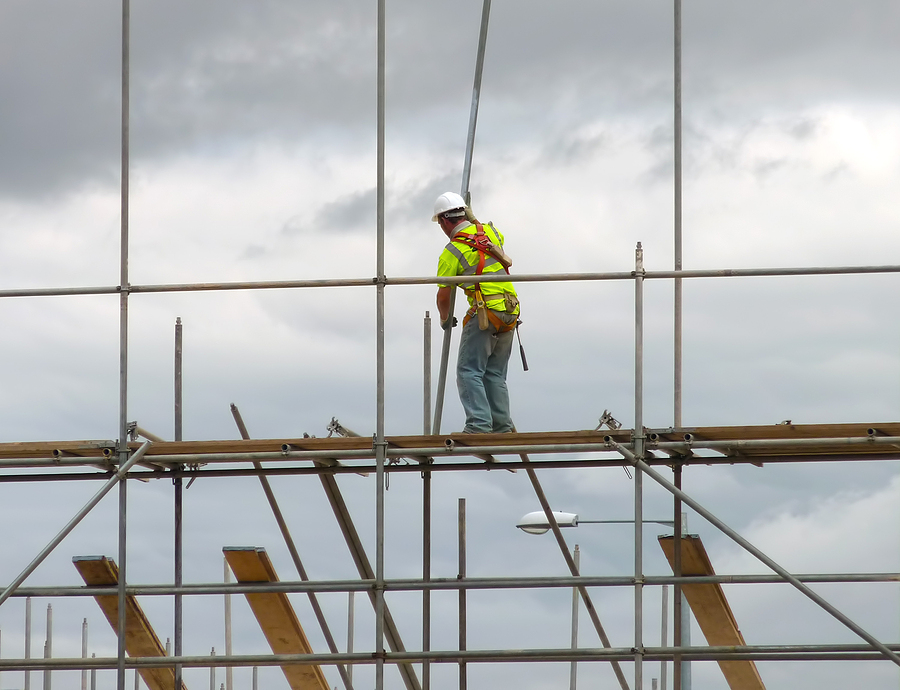Scaffolding Safety Mandates Employee & Employer Careful Attention for Worker Protection

Working on a scaffold towers above the ground may seem daunting. But there’s no need to fear as long as you follow safety guidelines. Scaffolding accidents leading to injuries are preventable when employees and employers work together.
Over 2 million construction workers, around 70% of the industry, use scaffolds daily. Unfortunately thousands suffer scaffolding-related injuries each year. This makes it the #3 OSHA standard violation.
Clearly more vigilance is required to protect scaffold workers. Both employers and employees must follow all of OSHA’s scaffolding rules. This ensures worker safety while meeting compliance.
What Makes Scaffolds So Risky?
Scaffolds support workers and materials well above ground. They must handle these heavy loads without collapse or other failures. Workers rely on its strength and stability to perform tasks safely.
Any deficiencies or unbalanced loads increase falling and structural failure risks. One small mistake can lead to tragic outcomes. This responsibility requires attention from all parties.
Key Scaffolding Safety Responsibilities
For Employers
You must provide scaffolds designed by qualified persons. These meet OSHA strength and capacity rules. Scaffolds, platforms and components endure 4 times the max intended load without failure.
Ensure qualified persons also check scaffolds before each shift. They verify no new defects exist that may reduce structural integrity after use. This helps find issues like damage, overloading, weathering, loose components, etc.
Supply proper fall protection and arrest systems for over 10 feet high. Guardrails, cross bracing, mid-rails and footings must comply with OSHA guidelines too. Fully plank or deck all standing platforms as well.
Restrain tipping on higher scaffolds by guying, tying or bracing them. Provide competent persons to oversee erection/dismantling to ensure safe access and fall protection.
For Employees
Inspect scaffolds and components before starting work. Check for any signs of damage or overloading from previous use. Report any questionable items to your supervisor right away.
Use all fall protection and arrest systems properly at all times. Set up guardrails on all open sides of scaffolds. Only access scaffolds using approved safe means. Never climb on cross bracing.
Work safely maintaining secure footing and leverage on platforms. Avoid overreaching while working. Prevent tools, materials or debris from falling by barricading open sides if needed.
Planning Ahead Avoids Issues
Carefully think through any upcoming scaffold work beforehand. Determine if scaffolds meet height and load requirements. Ensure anchorage points are available for fall protection too.
Provide adequate workspace with accessibility for task performance. Coordinate material hoisting plans. Allow only trained and authorized workers to assemble, use and disassemble scaffolds.
Considering allWorking safely on scaffolds requires everyone’s joint effort. But it ensures you go home safe at the end of each workday. That Makes all requirements worth the effort.
Common Scaffolding Questions
Do I need fall protection on all scaffolds?
Yes, fall arrest systems are mandatory for scaffold work over 10 feet high. Use guardrails as your primary protection. Personal fall arrest systems are your backup.
Can anyone erect scaffolding?
No. Employers must provide competent persons to oversee scaffold erection and dismantling. They ensure it’s done safely with adequate access and fall protection.
What is the first thing I should check before using scaffolding?
Inspect all platforms, guardrails, braces and components first. Check for any defects or signs of overloading beforehand. Report any questionable items immediately to your supervisor.
Is it safe to store materials on scaffold platforms?
No. Scaffolds have load limits for workers, tools and task items only. Storing extra items adds unknown weight. This can risk overloading and collapse.
